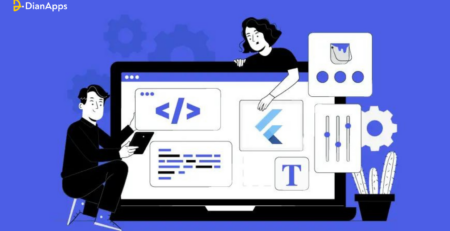How to Develop Stellar Android Apps in Linux
Developing Android apps in Linux has become increasingly popular due to the flexibility and versatility it offers to developers. Linux is an open-source operating system, which means that developers have access to a wide range of tools and resources that can help them create top-notch Android apps. By using Linux as their development environment, developers can enjoy the benefits of a stable, secure, and efficient platform that is ideal for creating high-quality mobile apps.
If you’re a developer who wants to develop stellar Android apps in Linux, there are several steps you can take to get started. From knowing everything about the latest Android 14, and setting up your development environment to selecting the right tools and frameworks, this process requires a combination of technical skills and creativity.
In this guide, we will cover the key steps involved in developing Android apps in Linux, including:
- How to set up your development environment
- Install the necessary tools and libraries
- Create your first Android app from scratch.
Whether you’re an experienced developer or just getting started, this guide will provide you with the knowledge and resources you need to develop stellar Android apps in Linux.
However, before we proceed, let’s know the benefits of using Linux in mobile app development along with the must-have features in your Android application.
Benefits of using Linux in android app development
1. Open-source:
Linux is an open-source operating system, which means that it is freely available to use, modify, and distribute. Linux-based open source control panel simplify Android app development with easy server management.
2. Powerful command-line tools:
Linux comes with powerful command-line tools that allow developers to automate tasks, debug apps, and perform other tasks efficiently. This makes it easier to develop, test, and deploy Android apps.
3. Stability and reliability:
Linux is known for its stability and reliability. It can run for long periods without requiring a reboot, making it ideal for running development servers and other critical applications.
4. Customization:
Linux is highly customizable, and developers can customize it to suit their needs. This allows developers to create a development environment that is tailored to their requirements.
5. Security:
Linux is known for its security features, which make it less vulnerable to attacks than other operating systems. This makes it an ideal choice for building secure Android apps.
Bonus Read: Importance of securing HTTP with certificate pinning on Android.
6. Community support:
Linux has a large and active community of developers and users, who are always ready to provide help and support. This can be especially helpful for new developers who are just starting with Android app development.
Critical Features to Integrate into Android Apps
Did you know that Android is the most popular mobile operating system globally, with over 3 billion active users? It is the go-to operating system for Android app developers who want to create innovative and engaging apps.
Therefore, to rule the landscape, your Android app must include all the critical features to hit the bull’s eye in order to enhance user experience, increase engagement, and promote retention.
Before moving on to the subject, let’s also know the top Android app development trends in 2023.
Responsive UI
A responsive user interface is crucial in any mobile application. It helps users navigate the app effortlessly and enhances their experience. Developers should ensure that their apps are optimized for various screen sizes, device orientations, and resolutions to provide a seamless user experience across all devices.
Intuitive Navigation
Effective navigation is critical to the success of any mobile application. Developers should integrate an intuitive navigation system that allows users to access all the app’s features without getting lost. The navigation should be consistent throughout the app and easy to use, with clear buttons and labels.
Push Notifications
Push notifications are a powerful tool for engaging users and keeping them informed about the latest updates and promotions. Developers should integrate push notifications into their apps, allowing users to customize their preferences and control the type of alerts they receive.
Social Media Integration
Social media has become an integral part of our lives, and integrating social media into mobile apps can enhance user engagement and retention. Developers should allow users to log in via their social media accounts, share app content on social media, and enable social media integration to enhance the user experience.
Offline Functionality
Not all users have access to a stable internet connection, and apps that require an internet connection may be less appealing to such users. Mobile app developers should ensure that their apps have some offline functionality, allowing users to access certain features even without an internet connection.
Analytics and Metrics
Data is vital in improving user experience and retention. Developers should integrate analytics and metrics tools into their apps to track user behavior, identify bottlenecks, and optimize the app’s performance. This data can help developers improve the app’s features and provide personalized content to users.
Security Features
Mobile apps are vulnerable to security threats, and developers should integrate security features to protect user data and maintain the app’s integrity. These features may include two-factor authentication, data encryption, and SSL certificates to protect user data and enhance the app’s credibility.
Personalization
Personalization is critical in enhancing user engagement and retention. Developers should integrate features that allow users to personalize their experience, such as customizing the app’s theme, setting preferences, and creating personalized content.
Payment Integration
Mobile payment systems have become a popular way of making transactions, and developers should integrate payment systems into their apps to provide users with a seamless payment experience. Payment systems such as PayPal, Google Pay, and Apple Pay can enhance user experience and promote retention.
Wondering how will these Android app feature impact your mobile application? Read here!
How To Set Up Android App In Linux Environment
Setting up an Android app development environment on Linux is a relatively straightforward process, but it requires a few essential steps. In this guide, we will go through the process step-by-step, including how to install the required software and tools. Here are the steps:
Install Java Development Kit (JDK)
The first step in setting up an Android app development environment on Linux is to install the Java Development Kit (JDK). Android apps are written in Java, so you need to have the JDK installed on your system. You can install it by running the following command in the terminal:
|
1 |
sudo apt-get install default-jdk |
Download and Install Android Studio
Android Studio is the official IDE for Android app development. You can download the Linux version from the Android Studio website. Once you have downloaded the installer, run the following commands to install it:
|
1 2 3 4 5 6 7 |
cd ~/Downloads sudo tar -xvzf android-studio-ide-<version>.tar.gz -C /opt cd /opt/android-studio/bin ./studio.sh |
This will extract the Android Studio files to the /opt directory and launch the Android Studio installer.
Install Android SDK
After installing Android Studio, you need to install the Android SDK. You can do this by opening Android Studio and selecting “Configure” from the welcome screen, then clicking on “SDK Manager”. Select the SDK platforms and tools you need and click “Apply” to start the download.
Create a New Project
Once you have installed the Android SDK, you can create a new project in Android Studio. Click on “Start a new Android Studio project” from the welcome screen, then follow the wizard to set up your project’s details, such as project name, package name, and target API level.
Design the User Interface
Android Studio provides a graphical layout editor that allows you to design your app’s user interface visually. You can drag and drop UI elements from the palette onto the layout editor and customize their properties from the attributes panel. You can also switch to the XML editor to edit the UI code directly.
Write the App Logic
After designing the UI, you need to write the app logic. Android apps are written in Java, so you need to create Java classes to implement the app’s functionality. You can create a new Java class by right-clicking on the app directory in the project explorer and selecting “New -> Java Class”. You can then write the Java code to implement the app’s logic.
Build and Test the App
Once you have written the app’s code, you can build and test it on an Android emulator or a physical device. To create an emulator, select “AVD Manager” from the toolbar, then click on “Create Virtual Device” and follow the wizard to set up the emulator. To test the app on a physical device, you need to enable USB debugging on the device and connect it to your computer. You can then select the device from the Run configuration and click on the “Run” button to deploy the app.
All-in-all, setting up an Android app development environment on Linux requires installing the JDK, Android Studio, and the Android SDK, designing the user interface, writing the app logic, and testing the app. By following these steps, you can create high-quality Android apps that meet your users’ needs and expectations.
Necessary Tools And Libraries Of Linux Used In Android App Development
Android app development typically requires the following tools and libraries in Linux:
1. Java Development Kit (JDK): This is required for developing Android apps using Java.
2. Android Studio: This is the official Integrated Development Environment (IDE) for Android app development. It comes with a set of tools and libraries for app development, including the Android SDK.
3. Android Software Development Kit (SDK): This is a collection of libraries and tools required for developing Android apps. It includes the Android Debug Bridge (ADB) and other utilities for testing and debugging apps.
4. Gradle: This is a build system used to automate the build process of Android apps. It can be used to build, test, and deploy Android apps.
5. Android NDK: This is a set of tools and libraries that allows developers to create native applications for Android. It is used for developing high-performance apps or for porting existing C or C++ code to Android.
6. SQLite: This is an embedded database that is included in Android. It can be used for storing data locally in Android apps.
7. Retrofit: This is a type-safe HTTP client for Android and Java. It can be used to make HTTP requests and handle responses in Android apps.
8. Picasso: This is a powerful image downloading and caching library for Android. It simplifies the process of downloading, caching, and displaying images in Android apps.
9. OkHttp: This is a powerful HTTP client for Android and Java. It can be used to make HTTP requests and handle responses in Android apps.
10. ButterKnife: This is a view-binding library for Android. It simplifies the process of initializing views in Android apps.
These are some of the necessary tools and libraries for Android app development in Linux.
Wrapping Up
To develop Android apps in Linux, developers need to have the necessary tools and libraries such as Java Development Kit (JDK), Android Studio, Android Software Development Kit (SDK), Gradle, Android NDK, SQLite, Retrofit, Picasso, and ButterKnife. These tools and libraries enable developers to build, test, and deploy Android apps efficiently and effectively.
Furthermore, developers need to have a solid understanding of Android app development principles and best practices. This includes having knowledge of Android architecture, user interface design, data storage, networking, and security. With a good understanding of these principles and the right tools and libraries, developers can develop high-quality Android apps in Linux.
Finally, developing Android apps in Linux requires having the necessary tools, libraries, and knowledge of Android app development services. With these in place, developers can create robust, high-quality Android apps that meet the needs of their users.




